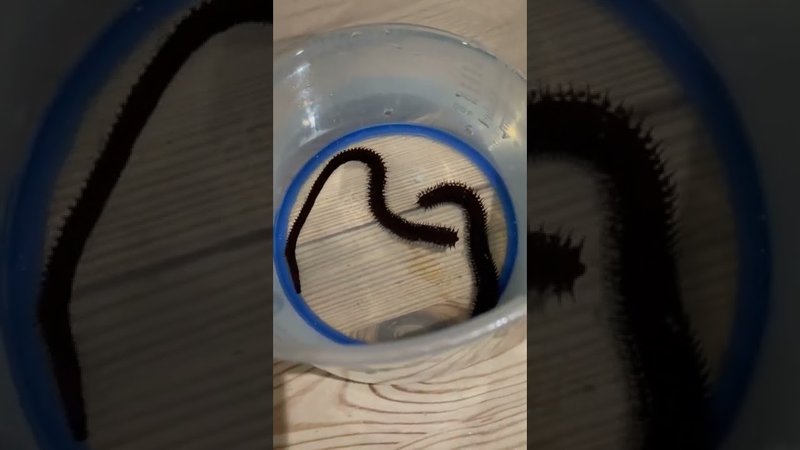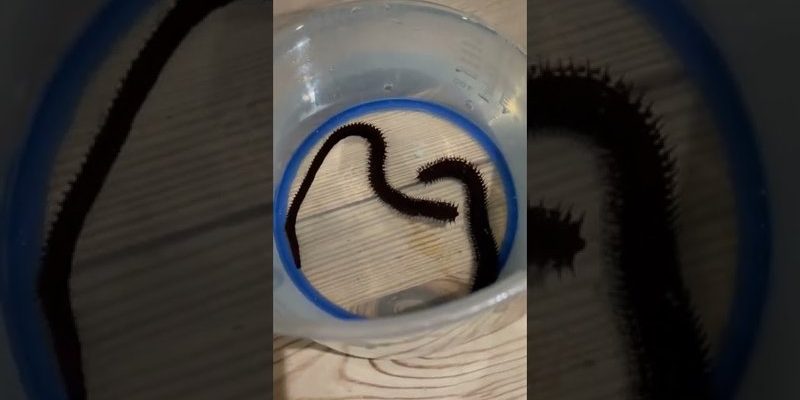
If you’re new to the aquarium hobby, you might be scratching your head wondering what exactly a Bobbit worm is. These creatures are long, segmented worms that can reach impressive lengths, sometimes over three feet! They burrow into the substrate and can be challenging to spot, often lying in wait until they feel vibrations from potential prey. This article will guide you through the process of detecting Bobbit worms in your newly set-up aquarium, so you can ensure your aquatic environment is both safe and welcoming.
Understanding Bobbit Worms
To get a grip on how to detect Bobbit worms, let’s first dive into who they are. Bobbit worms belong to the species *Eunice aphroditois*, and they’re part of the polychaete family. They’re known for their remarkable hunting skills, which involve ambushing unsuspecting fish or invertebrates. The body of a Bobbit worm is not just impressive in length but also features a colorful array of bristles along its sides.
These worms are typically found in depths of the ocean, but due to the popularity of marine aquariums, they can sometimes hitch a ride into your tank. They’re often mistaken for harmless worms or even dismissed as unwelcome detritus in the substrate. This is why understanding their behavior and appearance is crucial, especially when you’re setting up a new aquarium.
While Bobbit worms can be stunning to watch in their natural habitat, they can become quite aggressive in a home aquarium. You might be wondering if they’re dangerous. The truth is, while they’re not venomous, their predatory nature can pose a significant risk to smaller fish or invertebrates. Being aware of their presence is vital for maintaining a healthy aquarium environment.
Signs of Bobbit Worm Presence
Now that you know what Bobbit worms are, let’s talk about how to spot them. It’s not as simple as taking a glance at your tank. These worms love to hide in the substrate, blending in with the surroundings. But don’t worry; there are signs you can look for to help detect them.
First off, pay attention to your fish. Are they acting unusually skittish or staying away from certain areas in your tank? Fish that are constantly darting away or hiding can indicate a potential predator lurking below. You might also notice small piles of substrate or sand that seem out of place—these could be signs of a Bobbit worm burrowing.
Another indicator is the presence of dead or missing fish. If you’ve recently had some unexplained disappearances, it might be time to investigate further. Although there could be several reasons for this, keep an eye out for any unusual behavior or missing tank mates.
How To Conduct a Visual Inspection
So, how do you go about visually inspecting your aquarium? Here’s a simple step-by-step guide to help you:
- Turn Off the Lights: Start by turning off the aquarium lights. Bobbit worms are often less active in bright light, making it easier for you to spot them.
- Observe the Substrate: Take a close look at the surface of the substrate. You’re looking for any unusual movements or disturbances in the sand or gravel.
- Check for Tentacle Movements: If you spot a thin, long structure peeking out from the substrate, chances are it’s a Bobbit worm. They often extend their colorful tentacles when hunting, which can give away their position.
- Use a Flashlight: If necessary, use a flashlight to shine into the crevices of your aquarium. The dark areas can hide these creatures, so a little extra light can help reveal hidden worms.
Taking these steps can significantly increase your chances of spotting a Bobbit worm before it becomes a problem. Remember to be patient during your inspection; sometimes they’ll take a while to reveal themselves.
How to Remove Bobbit Worms
If you’ve confirmed the presence of Bobbit worms in your aquarium, don’t panic! There are various methods to remove them, but you’ll want to choose one that minimizes stress on your other tank inhabitants.
One approach is to use a baiting method. You can use a piece of sinking food like shrimp or a fish meal cube. Place the bait near the suspected burrow area. Once the Bobbit worm comes out to snag the bait, you can either trap it or carefully remove it from the tank.
Another method is to sift through the substrate. This can be a more intensive approach, but if the infestation seems significant, it might be necessary. Gently dig into the substrate and look for the worms. If you find them, remove them carefully with a net or your hands, but be sure to wear gloves to protect yourself.
If manual removal isn’t viable or if the Bobbit worm problem persists, consider consulting a professional aquarist or aquarium service. They can provide expert advice tailored to your specific situation.
Preventing Bobbit Worm Infestations
Once you’ve dealt with the current situation, it’s time to think about prevention. After all, you don’t want a repeat of this in your beautiful aquatic haven. Here are some straightforward tips to keep your aquarium Bobbit-worm-free:
- Quarantine New Additions: Whenever you introduce new fish or invertebrates, make sure to keep them in a separate quarantine tank for a couple of weeks. This helps identify any hidden pests before they can affect your main tank.
- Choose Quality Substrate: If you’re using live rock or sand, ensure it’s from a reputable source. Some products may contain unwanted hitchhikers, including Bobbit worms.
- Regular Maintenance: Keep your aquarium clean with regular water changes and substrate vacuuming. This will not only help keep pests at bay but also maintain a healthy environment for your fish.
Honestly, taking these preventative measures will not only help you avoid Bobbit worms but also contribute to creating a happier and healthier aquarium overall.
Final Thoughts on Bobbit Worms in Your Aquarium
Detecting Bobbit worms in your newly set-up aquarium might seem daunting, but with the right knowledge and tools, you can handle it like a pro. Remember to stay observant, conduct thorough inspections, and act quickly if you suspect their presence.
Creating a thriving aquatic environment is all about balance. The more you learn about these fascinating creatures, the better equipped you’ll be to manage your tank. By combining good practices with your love for fishkeeping, you can ensure your aquarium remains a safe and welcoming home for all of its inhabitants.
In the end, just like cooking, fishkeeping is about experimentation, patience, and a bit of adventure. So, embrace the process, stay vigilant, and most importantly, enjoy your underwater world!

